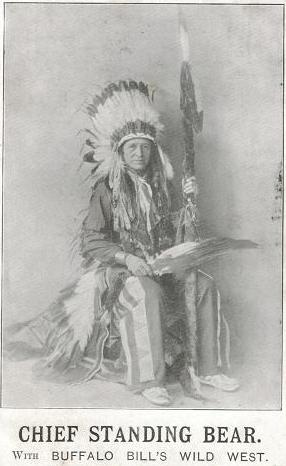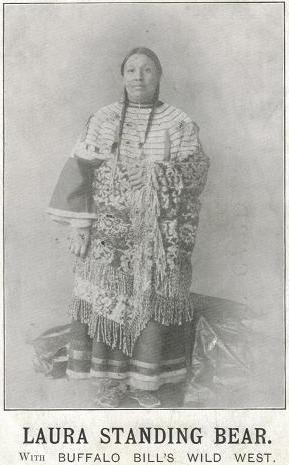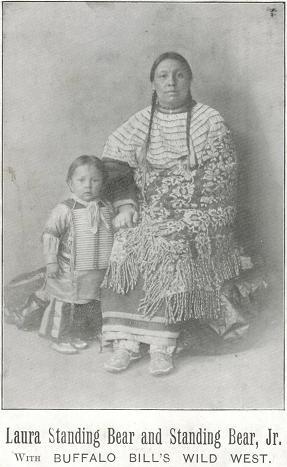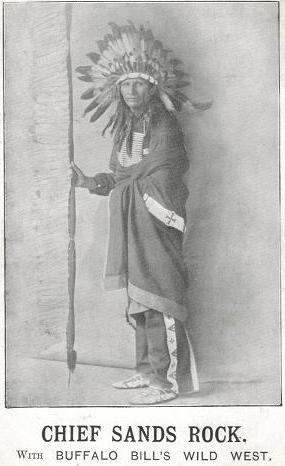

| Home Links Contact |
| 1887-88 1891-92 1892 1902-03 1904 |
|
|

Luther Standing Bear, the Lakota interpreter on the 1902-03 season, typified the most positive aspects of a new generation of Lakota. The name conferred upon him in his childhood was Ota Kte, Kills Plenty. However, he later attended and graduated from Carlisle Indian School in Pennsylvania, where he was rebranded through the imposition of his father’s personal name as a patronymic in combination with the enforced random selection of a Christian name. By the time of his employment by the Buffalo Bill organisation, he was an acculturated and paradigm ‘progressive’, having already fulfilled a formidable array of responsible positions within mainstream society. In later years, he bequeathed a highly informative and detailed account of his brief career as a show Indian, in the chapter With Buffalo Bill in England, in My People the Sioux (Lincoln & London: University of Nebraska Press, 1975, first published in 1928). Further information on the subject can be found elsewhere in the same volume and in Land of the Spotted Eagle by the same author (Lincoln & London: University of Nebraska Press, 1978, first published in 1931).
This circumstance makes for an interesting comparison with Black Elk, in contrast with whom, however, Standing Bear was fully proficient in English and highly literate. Standing Bear’s extensive writings, therefore, offer far less scope for radical re-interpretation. The Memoirs of Chief Red Fox (New York: McGraw-Hill Book Company, 1971, p. 142) misrepresent Standing Bear as a grunting savage. This fraudulent text is, however, a work of pure fiction to be disregarded in this and every other respect.
Accompanying Luther on the 1902-03 season were his wife and young son; Laura Standing Bear was one of nine married women accompanying their husbands and Luther Jr one of four juveniles arriving in England, two little boys and two little girls. One of the most widely publicised incidents on the entire tour was the birth of a daughter to the Standing Bear family, in the Wild West camp at Birmingham on 7th June 1903. When Luther, designated as ‘Chief Interpreter of Sioux Nation’, address entered as Aston Lane, Handsworth, registered the birth on the following day, in the Registration District of West Bromwich, the child’s first and middle names were entered as Alexandra Pearl, the first of these conferred in honour of the Queen. However, a bewildering array of middle names is cited from one source to the next. On the following day, mother and child were placed on public display in the sideshow, where patrons filed past and dropped coins into a collection box for the baby.
At least one caveat, however, is necessary. The picture postcard shown opposite, one of a series issued to help promote the 1904 tour, was drawn from a photograph of Laura alone. Presumably no photographic image of the baby was available, for, as highighted by Richard Green in A Warrior I Have Been (Folsom, LA: Written Heritage, 2004), p. 47, the child and its cradle are closely and unmistakably copied from a postcard depicting an Ojibwa infant, published by the Detroit Photographic Co. in 1903.
A further serious discrepancy lies in the repeated assertion that Alexandra was the first (female) Native American ever born in Great Britain; this is incorrect. The documented birth of Little Chief’s daughter in the Wild West camp at Salford on 8th February 1888 had been made much of at the time but was now conveniently forgotten.
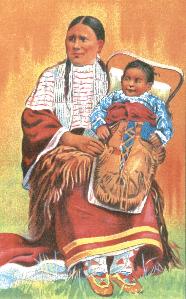
One might cite the further example of Hasonega Olympia Jefferson, a little Winnebago girl born in Mexican Joe’s camp in Cowcaddens, Glasgow, on 27th January 1892. Hasonega’s experience, over a decade in advance, provides an almost uncanny precedent for the manner in which Alexandra was exhibited soon after her birth.
Luther Standing Bear re-enlisted for the 1904 season but fate intervened to prevent a return trip to Great Britain, this time including Scotland. At Maywood, Illinois, on 7th April 1904 (not 1903, as incorrectly stated in My People the Sioux), he was among the Indians travelling in the last carriage of the train bearing the company eastward when it was involved in a rear-end collision. Three young men were killed outright and Standing Bear was among the many seriously injured. He survived the experience but it put a sudden end to his employment with Buffalo Bill.
The emergence of the picture postcard industry coincided more or less exactly with Buffalo Bill’s later tours of Great Britain. Here is a series of black and white postcards depicting Luther Standing Bear, his wife, his son, and other prominent members of the Indian contingent in 1902-03:
